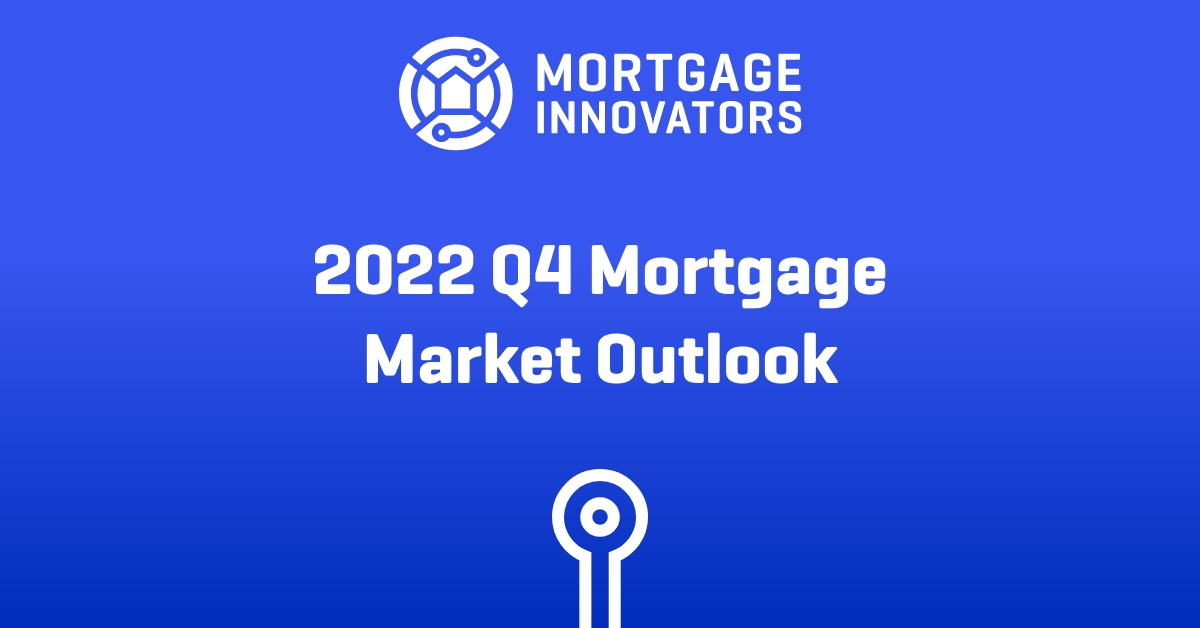Blog post by BeSmartee
Thus far, 2022 has proven volatile for the mortgage industry.
Between three interest rate hikes, inflation, and the continuous rise in home prices, you might think the current market is unsustainable, and you’re right.
Demand for new homes continues to outpace availability, leading to an artificial increase in home prices. Some economists fear that the real estate bubble will burst in 2023 at worst and simply turn over at best. WBut why don’t we take a closer look at the Q4 forecast before everyone goes all “Chicken Little” about 2023.
The memory of the early-2000’s housing boom looms large. Many experts warn that the coming crash will be terribly similar to 2008, but there are lots of reasons this fear is unfounded:
- Tighter lending controls ensure people can afford the homes they buy, even with a pandemic-induced easing of credit standards in 2020.
- Demographic changes as Millennials increase the number of potential first-time home buyers to 6.6 million over 2006 rates.
- The pandemic-related boom-and-bust cycle will see regional effects from increased migration, cooling the market in some places, while keeping it hot in others.
More important than whether or not the housing bubble is going to go belly-up, the three biggest factors at play for a good Q4 4th quarter are stabilized mortgage rates, steady home prices, and increased availability of new and existing saleable homes.
General speculation among housing and mortgage professionals is that all three of these occurrences will happen in Q4 of 2022 2022’s 4th quarter, but since Realtor.com has already raised the median sales appreciation for existing homes from 2.9% to 6.6% over their original forecast, we’re fully aware that absolutely anything can happen between now and January 1, 2023.
As mortgage professionals, you want satisfied customers without impacting your bottom line. So, let’s take a closer look at how you can come out of 2022 ahead of the game.
Shifting Markets Mean Shifting Priorities
You might have noticed a dip in summer home-buying; this is a standard trend and absolutely not a cause for panic. The housing market generally hits a lull when kids are out of school and picks up again in the fall.
What’s But something that is unusual this year is that while home sales slowed, prices continued to rise and existing homes remained on the market for a record-low time of 14 days. This indicates that demand is still high, even if home prices are artificially inflated from bidding wars.
But will the demand for homes continue to stay steady, even if we slip into a recession? The short answer is yes. The longer answer is that demand for existing homes will continue to stay steady or even rise slightly, while new home sales will drop off.
Why Will New Home Sales Flatten?
New home construction was at its peak just prior to the 2008 crash and never quite recovered. Add to that work slow-downs or stoppages from 2020, a severe labor shortage of skilled workers from builders, to welders, to plumbers, and an increased demand for rental properties when wages were stagnant.
Now, you have a perfect storm: new-home construction can’t keep up with demand now that wages are on an upswing.
People who had been renting in high-property-value areas are taking their rising work-from-anywhere paychecks and either moving to lower-cost areas or suddenly making enough in their current locations to get out of a bloated rental market. This means that without a new-home buffer, demand for existing homes will continue to remain high, and so will the available existing home inventory.









